You are here
Observatory Ulugbek.
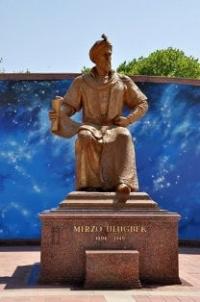
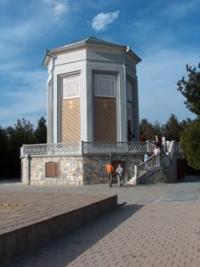
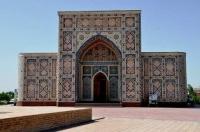
Tours to historical monuments in Samarkand.
«I swear by the Sky and the Going in Night!
And, what let you know, who is the Going in Night?
Star All-pervading»
From Sura 86, Koran.
Excursion in Ulugbek observatory in Samarkand.
After so much death and religion it's а relief to get сlеаг of the city centre and inhale some secularity on the hill from which Ulugbek studied the heavens. Тhе remains of his observatory аге 20 minutes' walk north of the bazaar up the Tashkent road.
The grandson of Tamerlane, Ulugbek was less interested in conquering the earth than the stars. His was the best-equipped observatory in the medieval wor1dj а magnet for leading scientists and а centre of progressive, often heretical thought.
'Where knowledge starts eligion ends,' was the motto of his teacher, Kazi Zade Rumi, and Ulugbek's quest for enlightenment led him to sponsor debates on such topics as the existence of God.
This did not go down too well with Muslim orthodoxy, and among those who found his beliefs hard to stomach was his own son, who assassinated him on 29 October 1449. Shortly afterwards, religious fanatics tore down the observatory.
Ulugbek's astronomical observations, which put him on а раr with Copernicus or Керlег, did not become known in the West until 1648, when а сору of his Catalogue of Stars was discovered in Oxford's Bodleian Library.
Не had plotted the position of the moon, the planets, the sun and 1018 other stars with amazing рrеcision, and calculated the length of the year to within 58 seconds (or even less; the earth span slower then than it does now).
These were some of the greatest achievements of the 'non-optical' (pre-telescope) era of astronomy. Having fallen victim to оnе orthodoxy, Ulugbek was а ready-made hero for another.
The Soviets made him the object of а minor cult and officially designated his murder as 'tragic'. What nobody knew was where, or quite how, Ulugbek had worked. Then in 1908, after years spent studying ancient manuscripts, а Russian primary school teacher, amateur archaeologist and former army officer called Vladimir Viatkin unearthed the lower portion of а giant sextant on Kukhak hill beside the road to Tashkent.
It was оnе of the major finds of the XX century. In the 1420s, Ulugbeg initiated the establishment of the large observatory in Samarkand. Here, during three decades, the medieval scholars, including outstanding astronomers Qazi-Zadeh Rumi, Djemshid Giyas ad-Din Kashi and Ali Kushchi, had been carrying out observation and measurements of celestial movements.
In the Islamic world, proximal foregoers of Ulugbeg’s group were Umar Hayyam in the XIth century and Nasr ad-Din Tusi in the XIII century, which created ephemeris tables “Melik-shah Zidj” and “Ilkhani Zidj”.
The Samarkand observatory became famous for the edition of “Ulugbeg Zidj”, containing theoretical introduction and tables of 1018 stars. The first part of the introduction is devoted to oriental computation; the second – to practical astronomy; the third – to theories of celestial movements; the fourth - to astrology.
European scientists learned about the observatory in 1648, after John Grivs published some parts from “Ulugbeg Zidj” in Oxford. In 1665, T. Hide published “Tables of longitudes and latitudes of fixed stars upon Ulugbeg’s observations” in Oxford. In difficult years of the late Middle Ages, the observatory was destroyed and fallen into neglect.
By the 19th century, even location of the observatory had become forgotten. The honour of Ulugbeg observatory discovery belongs to outstanding Samarkand archeologist Vyatkin V. L., whose tomb is located beside the site of observatory.
He excavated the observatory in 1908 on the rocky Kuhak hill at the feet of Chupanatin mounds. The eastern sector of the building was excavated in 1941, and the western - in 1948. The excavations revealed that the building had a form of a huge cylinder about 46 m in diameter and at least 30 m in height.
Underground remains of the major instrument, which provided amazing accuracy of astronomic observations became the most important find. It was the largest medieval astronomic instrument - a vertical quadrant for observation of the Sun, Moon and the other celestial bodies.
It was exactly oriented at meridian “south-north”. Arc radius was 40.21 m., and the length of the arc - 63 m.
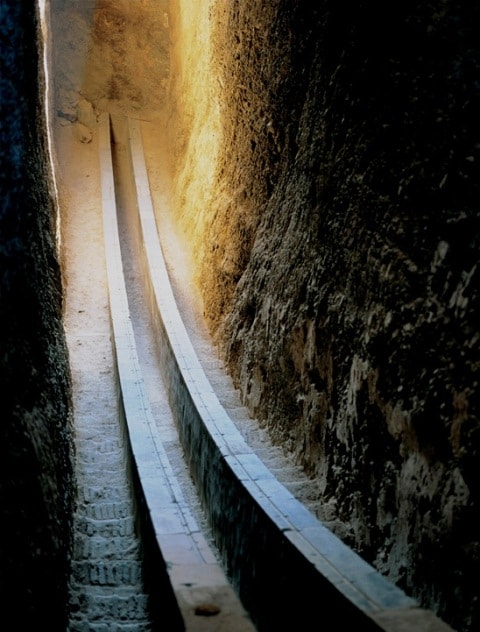
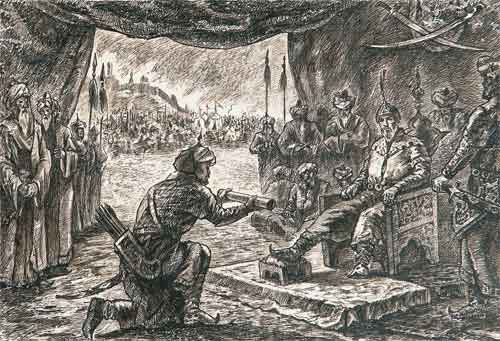
Authority:
Alexey Arapov. Samarkand. Masterpieces of Central Asia. Tashkent, San’at. 2004
Photos
Alexander Petrov.







